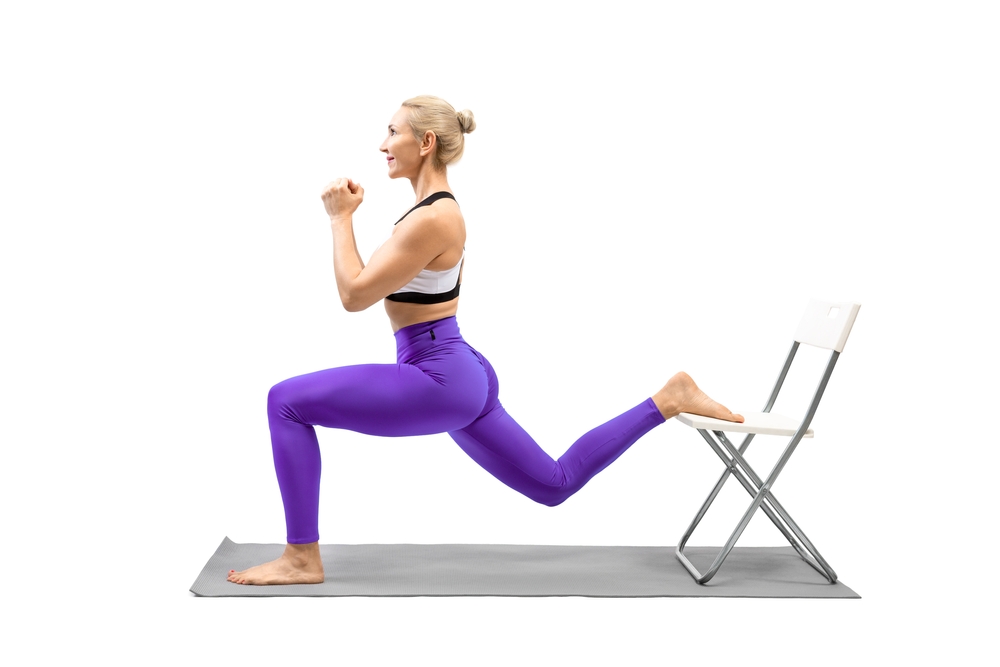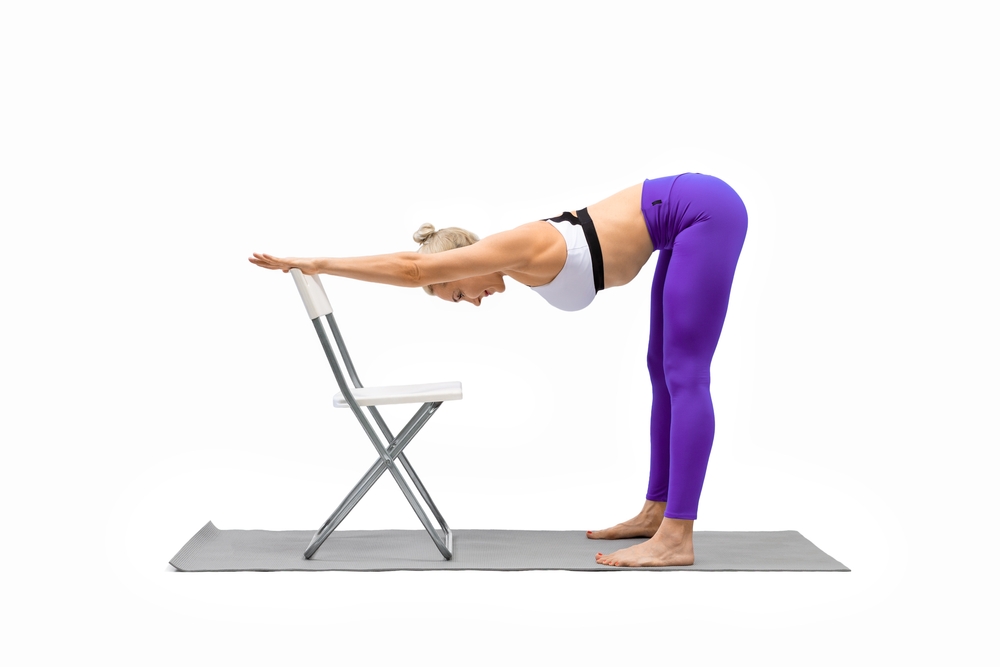Table Of Contents
We all have experienced back pain. In fact, data suggest that almost 80% of people have felt it at some point in their lives. Finding the right source of relief from back pain can be an overwhelming experience. At times, a simple stretch can be helpful, while other times, it does nothing. But is there a way to reduce pain without moving from your chair?
Yes, chair yoga is a gentle yet powerful practice that can help you relieve pain and regain strength right from where you are seated. Let’s learn how to do chair yoga for back pain, its benefits, and staying consistent in your routine.
What Is Chair Yoga and Why Is It Effective for Back Pain?

To put it simply, chair yoga is similar to conventional yoga. The only difference is that the practitioner is seated on a chair and performs the focused pose while seated. While the basic principles, such as breathing, awareness, and mobility, stay the same, everything is adapted for a seated position.
Such accessibility makes it a good exercise choice for people who cannot stand, have limited mobility, are pregnant, or just need a quick break from their office work. Chair yoga for lower back pain is particularly effective due to a variety of reasons. Look this:
- Low-impact nature. It involves gentle, low-impact movements that minimize joint strain while improving mobility and flexibility.
- Strengthen muscles. Even though the movements are gentle, they still strengthen the core muscles, providing the required support to the spine, thus reducing the risk of back pain.
- Increase flexibility. Stretching the tight muscles while doing chair yoga also helps to relieve muscle tension and discomfort. It also promotes better posture and spinal alignment.
- Increases circulation. Practicing chair yoga also improves circulation, range of motion through the joints, balance, and coordination. This is especially good for muscles around the spine and back, helping to strengthen the lower back.
Benefits of Chair Yoga for Back Pain Relief
Here are some other key advantages of chair yoga, particularly for alleviating back pain.
Accessible to All
One of chair yoga’s most essential advantages is that everyone can do it. Regardless of age, activity, or condition, anyone can enjoy the benefits offered by conventional yoga while sitting comfortably.
Gently Stretches the Body
Just like simple yoga, chair yoga also stretches the body. These mild movements gently stretch the muscles and ligaments, provide flexibility, and help to reduce pain in these achy areas.
Improves Spinal Mobility
Doing chair yoga for low back pain is especially good for maintaining flexibility in the spine, reducing stiffness, and improving posture over time. This is especially true for people who spend a lot of time sitting.
Read also – The Incredible Chair Yoga Benefits You Need to Know
Strengthen the Back Muscles
Chair yoga engages your spinal and back muscles, increasing strength and stability. When your spinal muscles are strong, they become fatigue-resistant, and you feel less pain overall. It also might relieve tension and promote relaxation, that is crucial for your back.
Top Chair Yoga Poses for Back Pain Relief and Strength
There are many chair yoga poses that can be done to reduce back pain, but here are our top three easy-to-do recommended exercises.
1. Forward Bend Pose
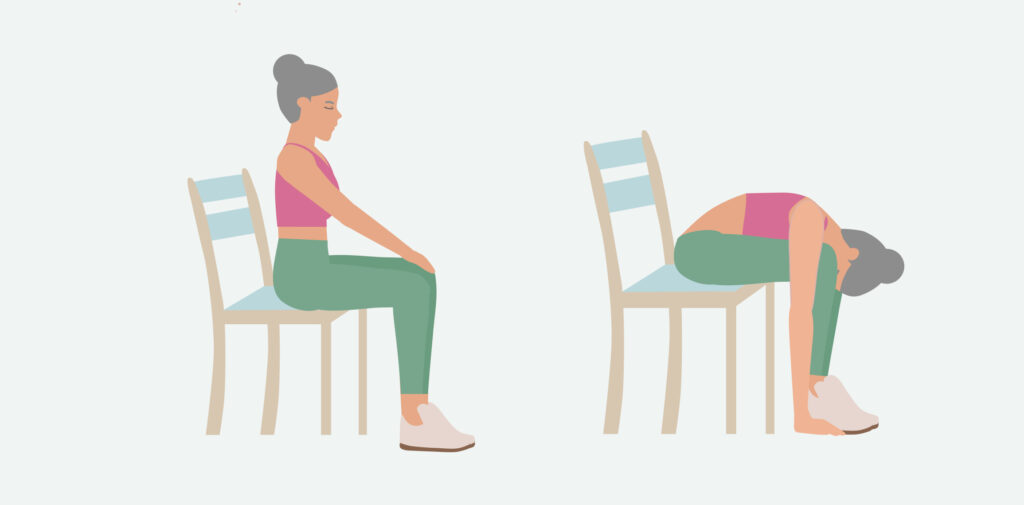
The forward bend pose is an excellent chair yoga for back pain relief. It targets all your spinal and leg muscles. To perform a forward bend:
- Sit upright on a firm chair with your feet grounded on the floor. Maintain a good alignment with head, shoulders, and hips.
- Now, tighten the core muscles, and as you inhale, hinge forward through the upper body. Slowly lower your arms to the floor. Feel the stretch in your neck, back, and leg muscles.
- Hold this position for a few breaths and slowly curl back to turn to the starting position.
- Repeat it a few times to get the best results.
2. Chair Cobra Pose
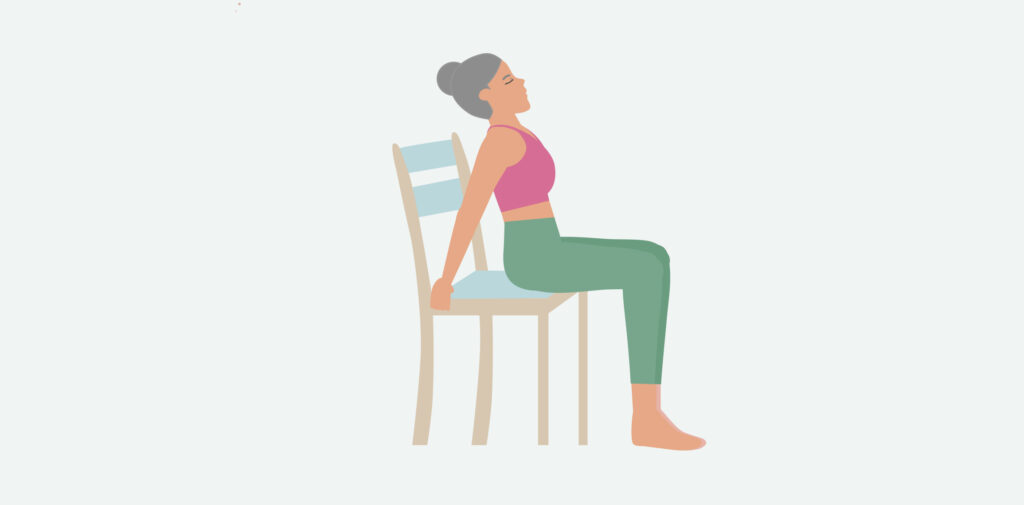
Researchers have already studied the cobra pose as a beneficial yoga pose for back pain relief, and its seated version is no exception. It stretches the spine, core, and neck muscles and also improves your posture. To do it:
- Start by sitting towards the front of chair, feet flat on the floor.
- Hold the back of the chair with both your hands on either side of the hips.
- Now inhale and curve your body in a forward direction. Feel the stretch going in your arms, chest, and spine.
- Exhale and drop your head to the back as well.
- Maintain this position for 5-6 breaths and then relax and repeat.
3. Overhead Reach
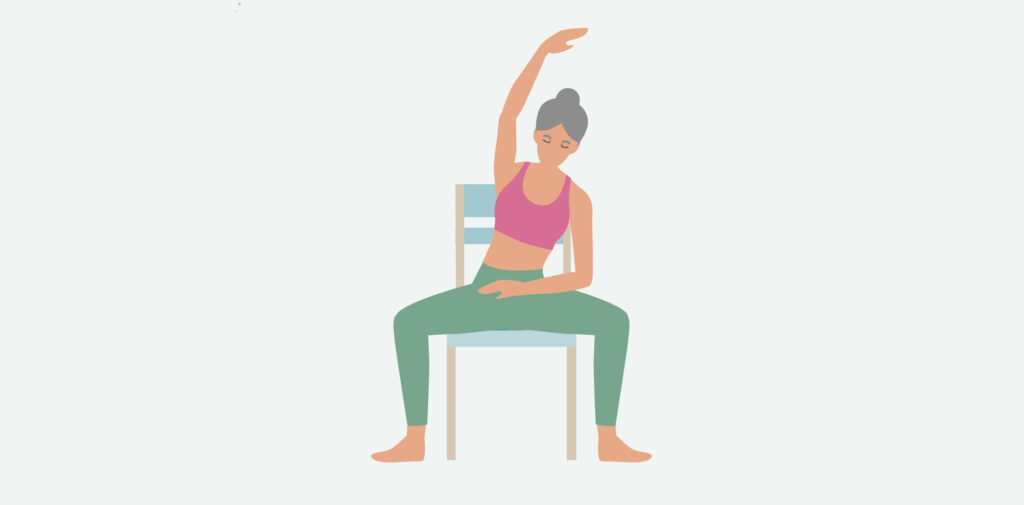
Overhead chair yoga not only reduces the low back pain but is also great for improving posture and circulation in the body. Let’s learn how to do an overhead reach yoga.
- Begin by sitting on chair with feet flat and proper alignment of the upper body.
- Now extend your right arm overhead and hold onto the seat from the left one for better support.
- Now inhale and simultaneously tighten your core muscles. Bend your body to the right side, reaching over your head, keeping the left hand firmly flat on the chair.
- Hold this position for 5-6 breaths and then switch sides.
- Repeat it a few times.
Chair Yoga for Back Pain for Seniors: Safe and Accessible Back Pain Relief
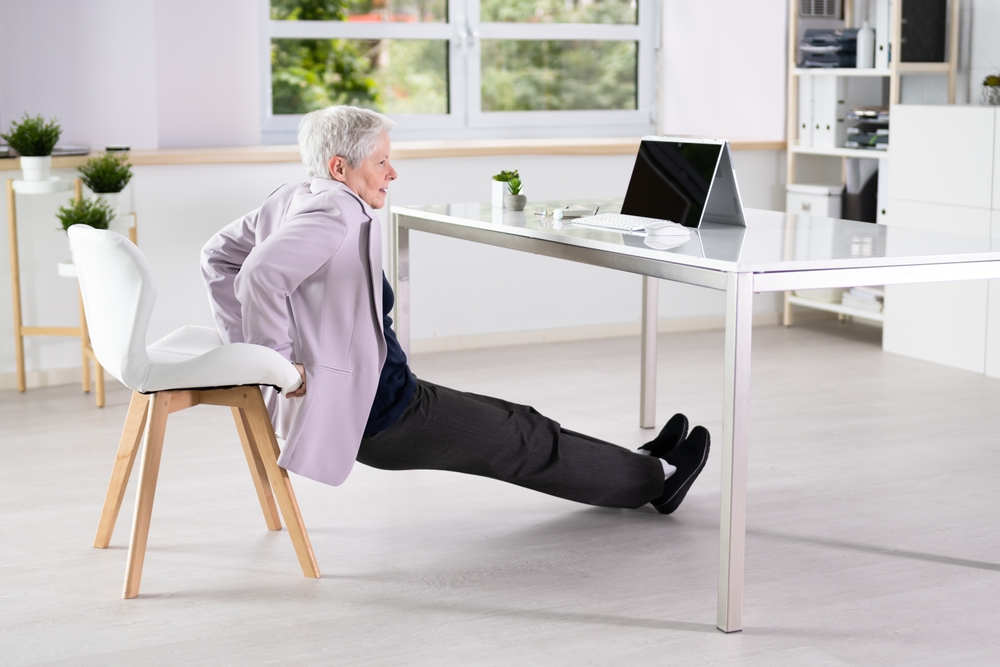
Chair yoga isn’t only great for people with sedentary lifestyles or limited mobility, but it is also great for seniors. Many research studies show that chair yoga for back pain for seniors is particularly beneficial.
As this is a very gentle exercise, it helps seniors engage in physical activity without the possibility of falling, making it a safe choice for those dealing with back pain. It also promotes mindfulness and relaxation in the body, which indirectly reduces the tension in the back.
Read also – Does Chair Yoga Really Work for Weight Loss? Expert Opinions Explored
How to Incorporate Chair Yoga into Your Daily Routine?
Chair yoga for back strength can be easily incorporated into your life by following these simple tips. Read now:
1. Keep it simple!
Always begin with the basics and short repetitions. Once you get comfortable, you can add more repetitions and exercises into your routine.
2. Choosing a chair!
Choose an armless chair with a sturdy structure. Avoid chairs with wheels to prevent tripping.
3. Stay regular!
Stay consistent and do chair yoga daily for 10-15 minutes.
4. Be mindful!
Be very mindful as you practice chair yoga. Doing deep breaths by inhaling via the nose and exhaling through the mouth can enhance the effectiveness of chai yoga.
5. Listen to body signals!
If you feel a particular pose is causing discomfort, pause or just change the pose. The best is to never push your body to a point that causes pain.
6. Water – your safe power!
Dehydration can increase muscle tension. That is why you should drink water before and after a chair yoga session.
Last but not least, once you have mastered the basic yoga poses for back pain and wish to step up your chair yoga game, try Lasta app – start your very own chair yoga plan today!
Conclusion
So, practicing chair yoga for back pain stands as an effective approach to minimize your discomfort, decrease muscle tension, and also enable relaxation with mindfulness which fights stress-related tension effectively. Try the above-given chair yoga poses, and you will be amazed at how such simple movements can enhance mobility, reduce pain, and improve the overall quality of your life!
Alex is a health sciences writer with experience in sports performance and rehabilitation settings. His areas of expertise include health and fitness, sports nutrition, and injury prevention. He is passionate about health science education and health/wellness optimization for people of all ages.



